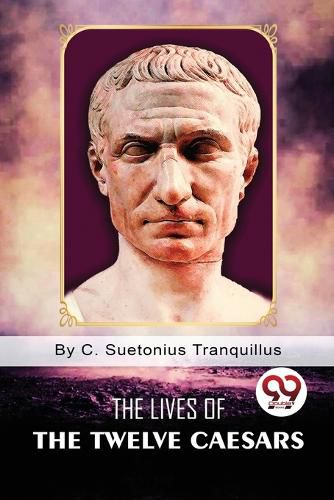Readings Newsletter
Become a Readings Member to make your shopping experience even easier.
Sign in or sign up for free!
You’re not far away from qualifying for FREE standard shipping within Australia
You’ve qualified for FREE standard shipping within Australia
The cart is loading…






This title is printed to order. This book may have been self-published. If so, we cannot guarantee the quality of the content. In the main most books will have gone through the editing process however some may not. We therefore suggest that you be aware of this before ordering this book. If in doubt check either the author or publisher’s details as we are unable to accept any returns unless they are faulty. Please contact us if you have any questions.
The Twelve Caesars (121 CE) can be considered one of the most picturesque biographical works ever written. It records the lives of the people who brandished complete power in Rome after it transformed from being a republic into an empire in 27 BCE. Suetonius was closely familiar with court life as he was a private secretary to one of the emperors, Hadrian. He uses that information in The Twelve Caesars to reveal insights into the ups and downs of the empire's early years, as well as the ideals and flaws of its seemingly divine rulers. The composition of the individual memoirs has frequently perplexed modern readers, who expect Suetonius to recount his story in an even and linear manner from the ruler's birth to his death. Suetonius generally began the autobiography with the emperor's family and his upbringing; the majority of each memoir consists of a myriad of memorable anecdotes about an emperor's private life and his public conduct. Be that as it may, this is not a mere inventory of corruption and sex. Instead, Suetonius lets his readers know that he has carefully organized the narratives "by categories." These categories incorporate the emperor's morality and his vices. After the vices and virtues, Suetonius' Lives normally conclude with a story of the emperor's passing and a comprehensive physical description of his body.
$9.00 standard shipping within Australia
FREE standard shipping within Australia for orders over $100.00
Express & International shipping calculated at checkout
This title is printed to order. This book may have been self-published. If so, we cannot guarantee the quality of the content. In the main most books will have gone through the editing process however some may not. We therefore suggest that you be aware of this before ordering this book. If in doubt check either the author or publisher’s details as we are unable to accept any returns unless they are faulty. Please contact us if you have any questions.
The Twelve Caesars (121 CE) can be considered one of the most picturesque biographical works ever written. It records the lives of the people who brandished complete power in Rome after it transformed from being a republic into an empire in 27 BCE. Suetonius was closely familiar with court life as he was a private secretary to one of the emperors, Hadrian. He uses that information in The Twelve Caesars to reveal insights into the ups and downs of the empire's early years, as well as the ideals and flaws of its seemingly divine rulers. The composition of the individual memoirs has frequently perplexed modern readers, who expect Suetonius to recount his story in an even and linear manner from the ruler's birth to his death. Suetonius generally began the autobiography with the emperor's family and his upbringing; the majority of each memoir consists of a myriad of memorable anecdotes about an emperor's private life and his public conduct. Be that as it may, this is not a mere inventory of corruption and sex. Instead, Suetonius lets his readers know that he has carefully organized the narratives "by categories." These categories incorporate the emperor's morality and his vices. After the vices and virtues, Suetonius' Lives normally conclude with a story of the emperor's passing and a comprehensive physical description of his body.